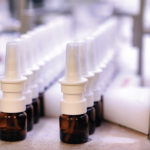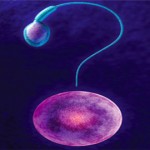Although the end result of this process may be similar across patients, Sjögren’s disease is regarded as a heterogeneous condition with a wide range of clinical manifestations. Such diversity among patients, Dr. Nocturne explained, can make the disease difficult to treat and to study. Thus, the work from Tarn and colleagues on stratifying patients with Sjögren’s disease into different clinically and biologically distinct subgroups based on patient-reported symptoms has been of great help.
Interferon may play a larger role in the pathogenesis of Sjögren’s disease than was previously appreciated. This may have implications for selecting the best therapeutic targets.
In a study of more than 600 patients with primary Sjögren’s disease, patients were separated into four groups: 1) low symptom burden, 2) high symptom burden, 3) dryness dominant with fatigue, and 4) pain dominant with fatigue. The authors found that these subgroups show significant differences in immunological markers, peripheral blood lymphocyte counts, autoantibody status, and transcriptomic profiles. Of great interest to clinicians is the finding that reanalysis of trial data stratifying patients into these subgroups suggested that there may be a positive treatment effect with hydroxychloroquine in the high-symptom-burden group and of rituximab in the dryness dominant with fatigue group.3
Given that there are no U.S. Food & Drug Administration (FDA) approved treatments for Sjögren’s disease and selection of therapy for patients remains a challenge, Dr. Nocturne believes that more work should be done to stratify patients in order to predict potential response to specific treatments.
It is on the subject of treatment that things seem to be evolving in the field of Sjögren’s disease of late. Dr. Nocturne provided an overview of several positive phase 2 clinical trials taking place in this space.
The first study was on dazodalibep, a CD40 ligand antagonist. In this study, two populations of patients with Sjögren’s disease were studied: one with moderate-to-severe systemic disease activity and another with high symptom burden but limited systemic involvement. In this study, dazodalibep was found to significantly improve disease activity and patient-reported outcomes compared with placebo at day 169 in both groups. The medication was generally well tolerated, with adverse events including COVID-19, diarrhea, headache, and infections.4
The next study was of iscalimab, a monoclonal antibody targeting CD40. The study involved two cohorts of patients with Sjögren’s disease: 1) a dose-ranging cohort of patients with a EULAR Sjögren’s Syndrome Disease Activity Index (ESSDAI) score of 5 or higher and a EULAR Sjögren’s Syndrome Patient Reported Index (ESSPRI) score of 5 or higher who were randomly assigned to subcutaneous iscalimab 150 mg, 300 mg, 600 mg or placebo in a 1:1:1:1 fashion and 2) a proof-of-concept cohort of patients with an ESSDAI score of less than 5, ESSPRI (dryness or fatigue) score of 5 or higher, and Impact of Dry Eye on Everyday Life score of 30 or higher who were randomly assigned to iscalimab 600 mg or placebo in a 1:1 fashion.



